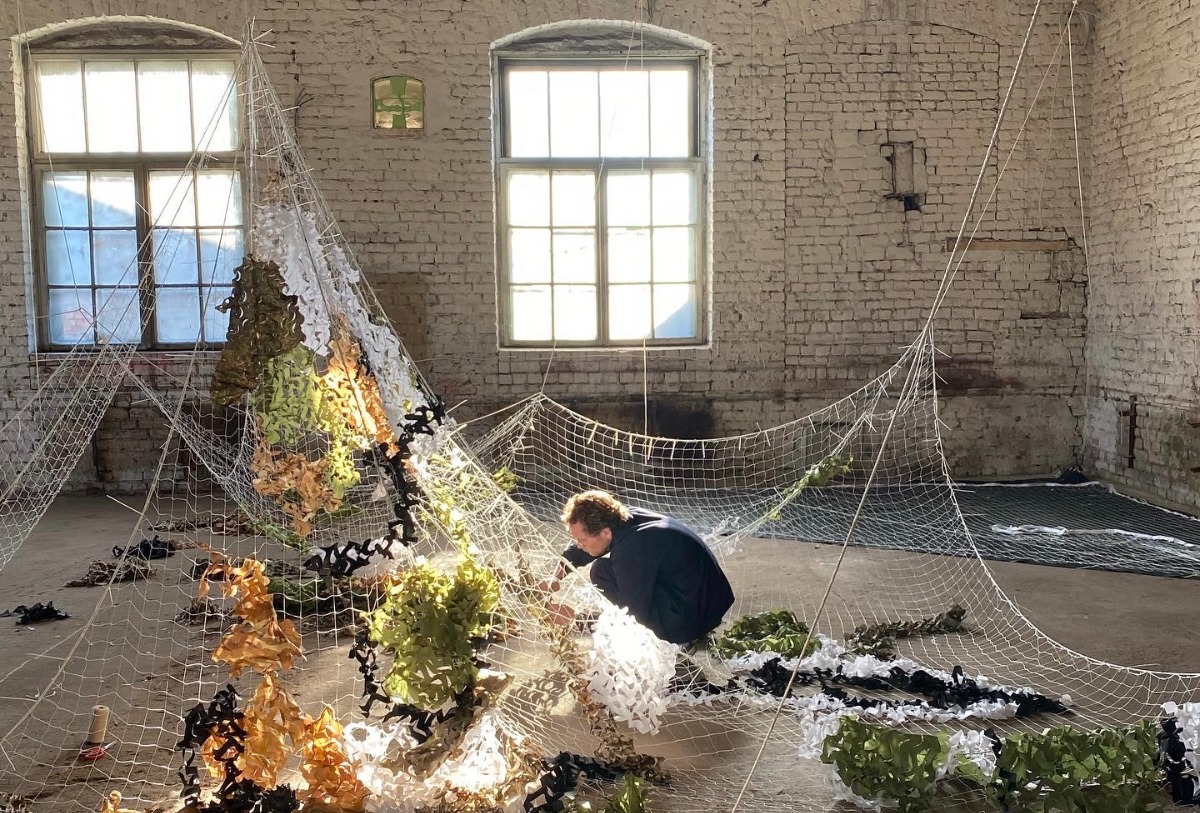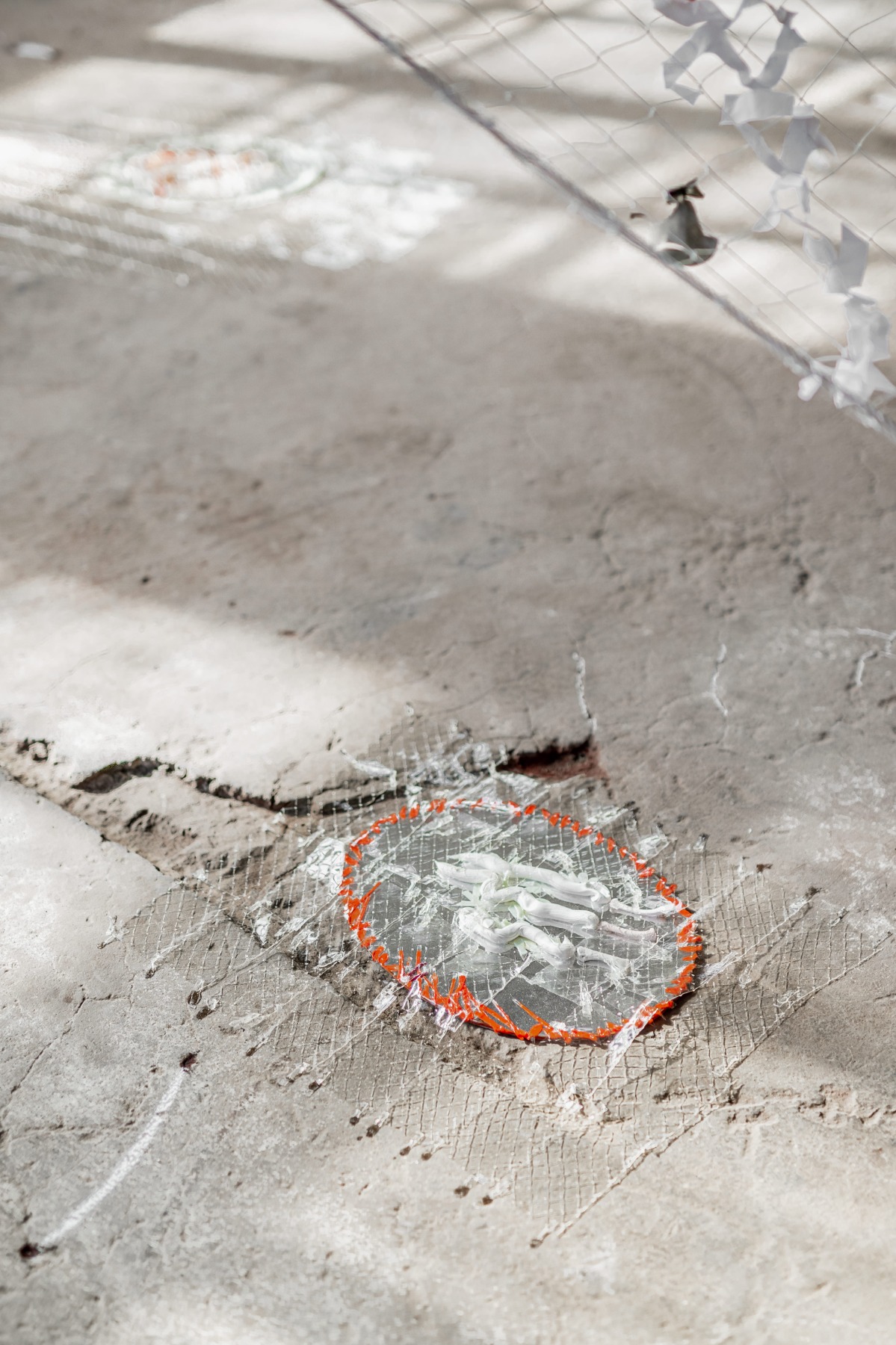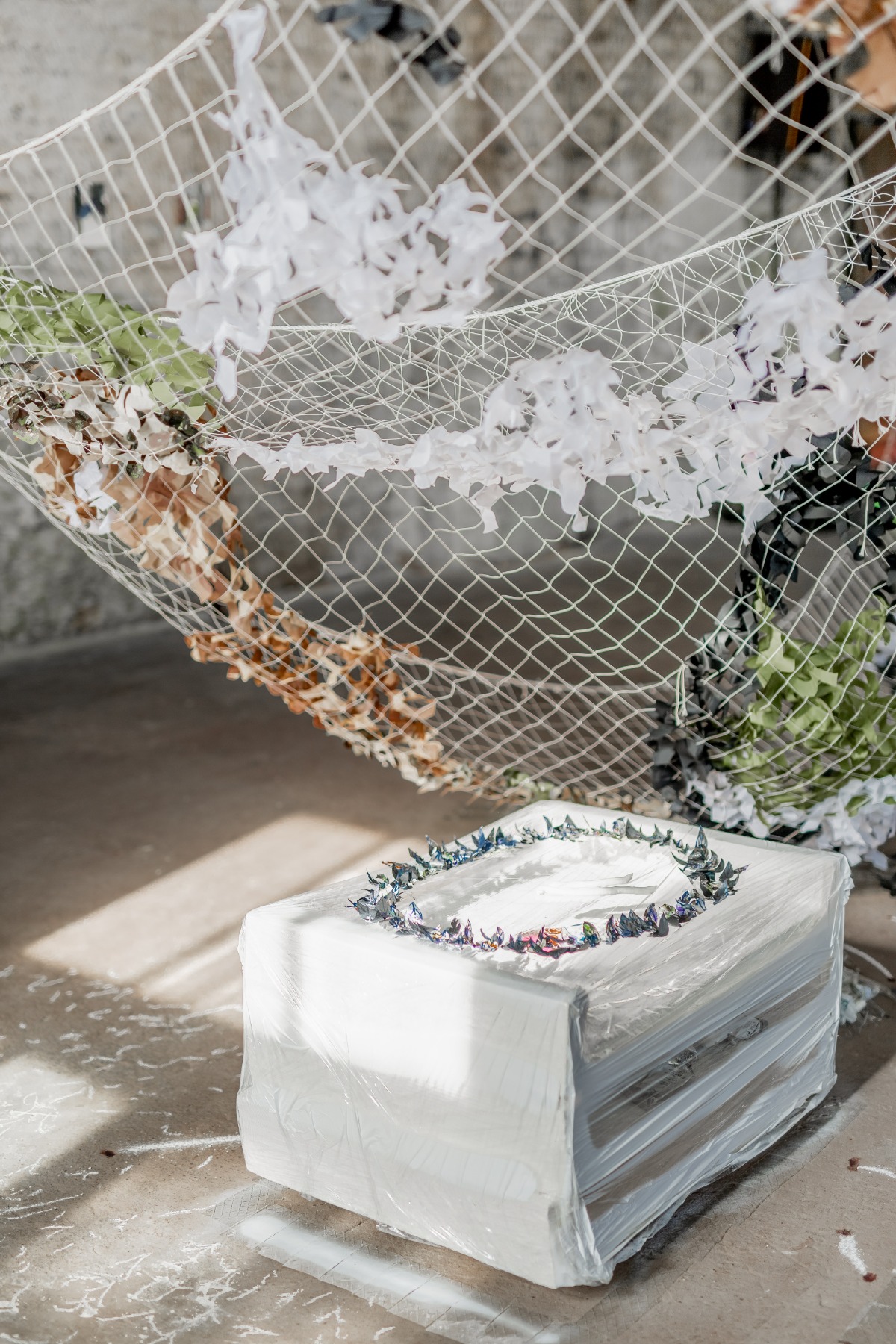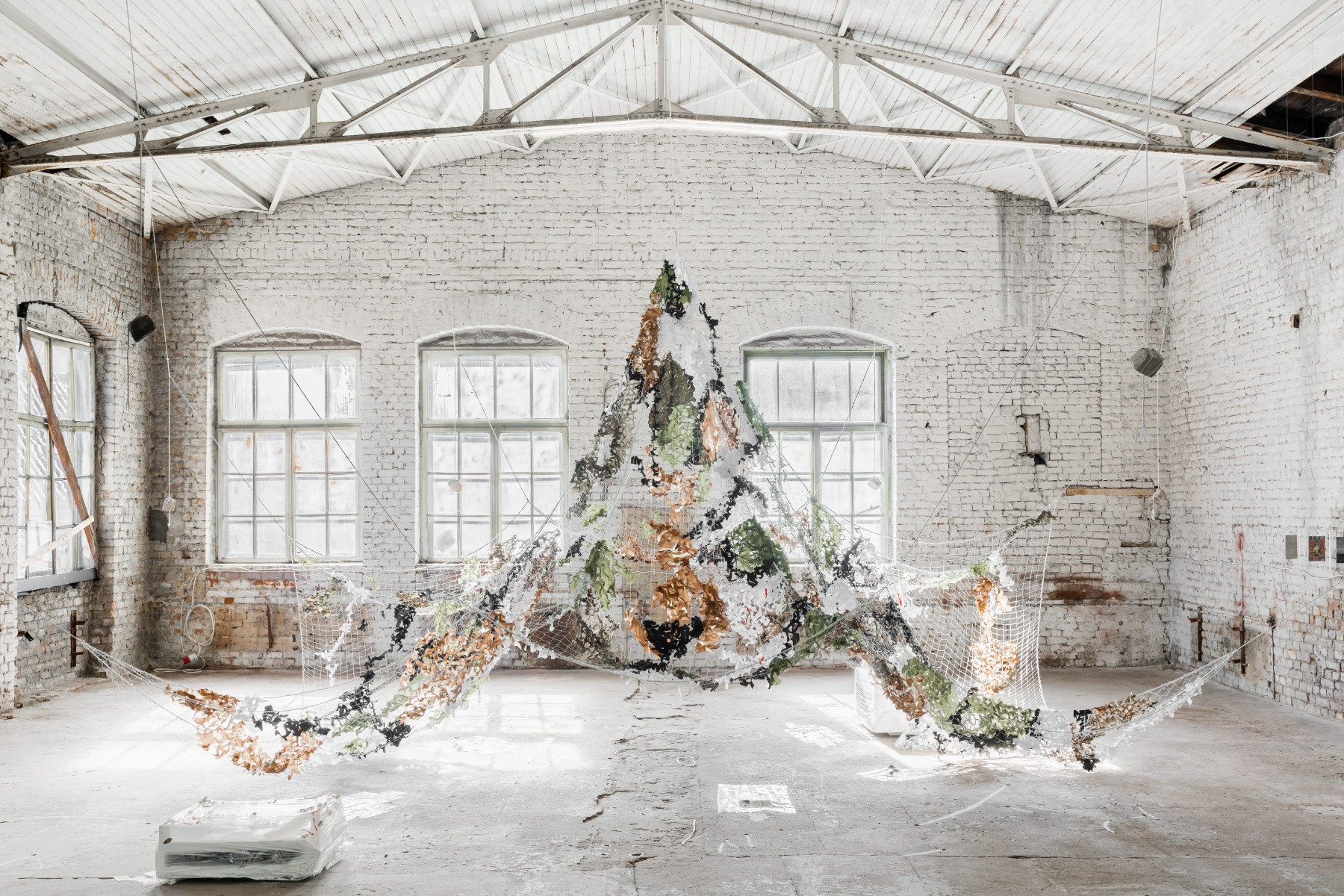
The Art of Hiding in Plain Sight
A conversation with an Oslo-based architect Jonas Løland
Jonas Løland is an Oslo-based architect who is collaborating with Latvian artist Elza Sīle to create the ambiguous artwork Garden Party. The joint installation is part of the LOW off-site group show Synchronicities – a contemporary hybrid flirting with art, performance and architecture that also sorts out the clashes and overlap between spiritual awakening trends versus social awareness. To partly maintain the term’s originally mystical undertone, viewers are invited to perceive the ambivalent “synchronicities” of the show not only using active sight but also with their “gut feeling”.
Elza Sīle’s and Jonas Løland’s Garden Party investigates hidden meanings while they themselves learn the art of concealment. With associative visual code maneuvers and visual strategies, they both turn to the “alchemy of joining things that don’t really go together”. By using vastly different methods and materials and constantly seeking connections, the two artists are engaged in similar inquiry into forms of spatial illusion that generate perceptual experiences. They are confidently experimenting with painting and architecture, and by using these edgy gestures, Løland and Sīle have created an outstanding paraphrase about civilian leisure activities, animal traps and military actions. Echoes from the past, signs from the present, and visual sequences of aesthetic selections sourced from one’s mind are all presented in the web of this artist-made macrocosm.
Please expand on the story of how your collaboration with Elza Sīle began. You were already planning some sort of “special operation” long before I invited you both to take part in the Synchronicities project, were you not?
I can neither confirm nor deny the existence of any intended or executed “special operation”.
We first met during my architectural studies in Oslo in the studio of Neven Fuchs. Her partner at the time, Juris Strangots, and I became great friends and he introduced us. She was a fixture in the studio space and used it to work on her art and attend lectures, etc. Similar to the classic scene of the janitor solving the equation left on the blackboard, it was painfully obvious that she was one of the stronger students without actually being a student at the school. Years later, while I was working in Switzerland, we started getting more involved and testing possible collaborations. The most notable being the current Garden Party at LOW.
Jonas Løland and Elza Sīle during the installation of Garden Party
Elza and you are, of course, very different stylistically, but quite a match at the same time, like two pieces from a puzzle. Where do your and Elza’s perspectives cross, and where do they diverge in a complementary way?
There is, of course, the architectural link, and we both have similar associative ways of thinking and working, but the main intersection is maybe a shared interest in the technology of conflict and deception. Since I was a kid, I have been obsessed with camouflage and have spent a lot of time and effort digitizing existing patterns and designing my own. Elza’s art is very good at stimulating this set of very specific and fundamental sensibilities in me, and I think this has turned out to be productive for both of us.
I recently had an interesting conversation with the artist Kamil Bouzoubaa-Grivel at his exhibition at Palette Kiosk. Kamil mentioned that camouflage patterns were actually created by artists during World War I and II. This is only natural, in a sense – camouflage consists of visual patterns, and artists have always had politically active voices, but somehow, this fact just took me by surprise.
Yes! The history of camouflage is worth looking into. Before capitalism, there was the military, and before that, the church, the king, etc. Artists have always been good at keeping busy. It seems strange for artists to be that militarized today, but I suppose it was progressive to be nationalistic back then, in an anti-imperialistic kind of way. The big project of war also allows for an effort and scale that is very alluring, especially if you close your eyes to the human suffering
The similarities between camo and art goes quite far, I think. You have people who think it should be as realistic as possible (Realtree camo), you have univeralists (Multicam and ACUPAT), regionalists (HyperStealth and PenCott), post-Kantian scientific (MARPAT, etc), scientism (the fractal camo of Finland and Italy), symbolism (the camo of Croatia), modernist abstraction (ERDL and flecktarn), the list goes on… Understanding this ideological landscape of approaches to the same question has helped my late start into the history of art and culture. You could say that I understand art through camo, and not the other way around. It is all about form and attempts at meaning, so there is a lot of overlap.
Garden Party, 2022. Elza Sīle & Jonas Løland
You have quite a background in architecture, meanwhile, something has stirred up your interest in mingling with the wobbly field of contemporary art. What triggered your appeal to rebellious, enthusiasm-based (read: underpaid), multi-disciplinary art expressions?
As an architect, you work with the alchemy of joining two things that don’t really want to go together. The aesthetics of form, space and object on the one side, and the constraints and functionality of a building on the other. A bit like writing a poem or making mayonnaise, you could say. Very difficult! When the burden of constraints becomes too much to bear, architects start dreaming of the milder constraints of the artist, the same way artists dream of the clarity of constraints of the architects. So while I do think there is some escapism in my mingling with art, I also hope it helps me better understand the constraints specific to architecture.
Still, I must admit that I am, above all, driven by what I find interesting, and so far it has not cared much about professional categories nor pay, much to my own detriment. :)
It definitely feels that your architectural work is breaking some of those constraints. Where do you think your approach deflects from a more traditional comprehension of an architect’s work?
One difference I try to achieve is to not affirm established and approved tastes, but rather use my sensibilities to propose unusual work that still feels true to the world. I also do not really believe in breaking constraints, as I think they are essential to architecture and design. Desperately trying to master or break all constraints is a bit foolish, and in the end, the point of failure – the one that you’re not able to master, and which will come – will end up defining the work in an unintended way.
Garden Party, 2022. Elza Sīle & Jonas Løland
Tell us about the birth of Garden Party. What kind of impulses, ideas and observations were married here?
Somehow, the civilian idea of disappearing into a private garden got mixed with the idea of militarized food – and the garden party was born. Another question was – how might the spooky circus of military campaigns rejoin its more harmless relative of “harmless” everyday camping? Similar to planning any party, or war, for that manner, we knew it was all about logistics. So we quickly decided that if I could take care of the tent, Elza would provide the food.
Garden Party, 2022. Elza Sīle & Jonas Løland
There’s something fascinating in the idea of choosing camouflage, the art of hiding in plain sight, as a visual communication tool. So, should we assume that both of you are freely showing and, at the same time, hiding something from the viewer?
Well, one way of defining conflict and war is as the act of giving the impression of doing one thing, but actually doing something else. I think camouflage encapsulates this idea in a compelling visual and symbolic package, but there are also the pure formal aspects of camo and the idea of mimesis, mimicking the world. These are the things we would like to show, while the trap part of the net can remain unarticulated – as it should in a good trap.
Garden Party, 2022. Elza Sīle & Jonas Løland
If we were to send invitations to your and Elza’s Garden Party, how would you copy-write the event’s description?
We’ll provide the toothpaste, but bring your hungry eyes. Come to see and not be seen, and remember to never let the party die out.
Title image: Jonas Løland during the installation of Garden Party